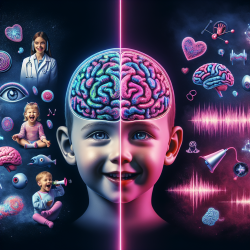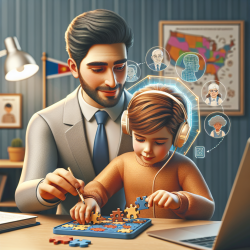Understanding Hearing Loss: A Brain Perspective
Hearing loss is not just an auditory issue; it has profound effects on the brain's structure, impacting both gray matter (GM) and white matter (WM) across the lifespan. The systematic review, meta-analysis, and meta-regression conducted by Manno et al. (2021) provide critical insights into these structural changes, offering valuable information for practitioners aiming to enhance therapeutic outcomes for children.
Key Findings from the Research
The study analyzed 72 MRI-based studies, encompassing both congenital and acquired hearing loss cases. Here are some pivotal findings:
- Gray Matter Reduction: Both congenital and acquired hearing loss lead to a decrease in GM, particularly in the frontal lobe. Congenital cases showed more significant impacts on the right hemisphere, while acquired cases affected the left hemisphere more.
- White Matter Changes: WM alterations often underlie GM changes in congenital hearing loss, highlighting the interconnectedness of brain structures.
- Developmental Impact: The study underscores the importance of early diagnosis and intervention, as hearing loss affects brain structure from infancy through adulthood.
Implications for Practitioners
For speech-language pathologists and other practitioners working with children, these findings emphasize the need for a comprehensive approach to therapy. Here are some actionable steps based on the research:
- Early Screening and Diagnosis: Implement a battery of clinical tests to identify hearing loss early, improving neurocognitive outcomes.
- Customized Therapy Plans: Consider the specific structural brain changes in each child when designing therapy plans, focusing on enhancing both auditory and cognitive functions.
- Interdisciplinary Collaboration: Work with neurologists and audiologists to monitor brain changes and adjust therapeutic strategies accordingly.
Encouraging Further Research
While this study provides a robust framework for understanding hearing loss's impact on brain structure, it also highlights the need for further research. Future studies should aim to:
- Explore the longitudinal effects of hearing loss on brain development.
- Develop predictive models for therapy outcomes based on brain structure changes.
- Investigate the role of advanced neuroimaging techniques in early diagnosis and intervention.
By integrating these findings into practice, we can enhance therapeutic outcomes for children with hearing loss, supporting their cognitive and communicative development.
To read the original research paper, please follow this link: Hearing loss impacts gray and white matter across the lifespan: Systematic review, meta-analysis and meta-regression.










